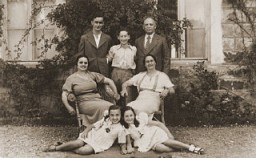You searched for: 点赞分享赚钱系统定制开发【TG���������@EK7676】平台包网搭建点赞分享赚钱系统定制开发【TG���������@EK7676】平台包网搭建45lYiA56c7
<< Previous | Displaying results 11-20 of 136 for "点赞分享赚钱系统定制开发【TG���������@EK7676】平台包网搭建点赞分享赚钱系统定制开发【TG���������@EK7676】平台包网搭建45lYiA56c7" | Next >>
-
Forced labor in Buchenwald
PhotoPrisoners at forced labor near the entrance to the Buchenwald concentration camp, Germany, 1937–45.
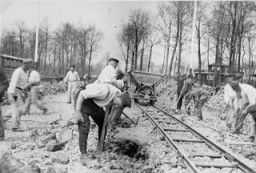
-
German police guard a group of Roma (Gypsies)
PhotoGerman police guard a group of Roma (Gypsies) who have been rounded up for deportation to Poland. Germany, 1940–45.

-
Heidenheim Displaced Persons Camp
ArticleAfter WWII, many Holocaust survivors, unable to return to their homes, lived in displaced persons camps in Germany, Austria, and Italy. Read about Heidenheim DP camp.

-
Prisoners in the roll call area at Melk
PhotoNewly arrived prisoners are assembled in the Appellplatz (roll call area) at the Melk camp, a subcamp of Mauthausen in Austria. 1944–45.

-
Robert Weinberger
ID CardRobert was raised in a German-speaking Jewish family in the Slovakian capital of Bratislava, where his father owned a dental supply business. Robert grew up bilingual: He learned Hungarian from his mother and he attended a German-language Jewish grammar school. 1933-39: When Hitler rose to power in Germany, anti-German sentiment grew in Slovakia and many Jews in Bratislava, like Robert's parents, who had originally identified with German culture, enrolled their children in Slovak schools. In March 1939…
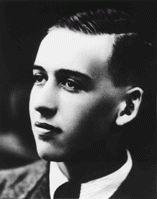
-
Personnel of T4
PhotoPersonnel of T4, the agency created to administer the Nazi Euthanasia Program. Pictured from left to right are: Erich Bauer (chauffeur), Dr. Rudolf Lonauer, Dr. Victor Ratka, Dr. Friedrich Mennecke, Dr. Paul Nitsche,and Dr. Gerhard Wischer. Berlin, Germany, 1939–45.

-
Romani (Gypsy) children play outside at the Jargeau camp
PhotoRomani (Gypsy) children play outside at the Jargeau internment camp. The camp was established in response to a German order in October 1940 calling for the arrest and confinement in camps of all Frenchmen or foreigners in the Loiret region who did not have a permanent residence. Jargeau, France, 1941–45. Conditions in the camp were extremely poor and the lack of sanitation facilities led to the periodic outbreak of epidemics.
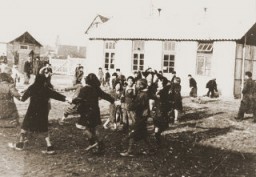
-
Rivoli Displaced Persons Camp
ArticleAfter WWII, many Holocaust survivors, unable to return to their homes, lived in displaced persons camps in Germany, Austria, and Italy. Read about Rivoli DP camp.
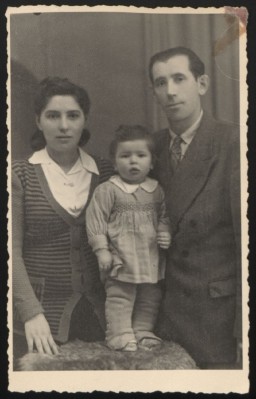
-
Granite quarried in Mauthausen
ArtifactThis photograph shows some of the 190 granite blocks donated to the United States Holocaust Memorial Museum by the Mauthausen Public Memorial in Austria. The Nazis established the Mauthausen concentration camp in 1938 near an abandoned stone quarry. Prisoners were forced to carry these granite blocks up more than 180 steps. The small blocks weighed between 30 and 45 pounds each. The larger blocks could each weigh more than 75 pounds. Prisoners assigned to forced labor in the camp quarry were quickly worked…
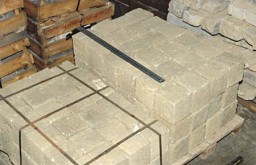
-
Salonika
ArticleSalonika, Greece was invaded and occupied by the Nazis in 1941. Learn more about the fate of the Jews in Salonika during World War II.
